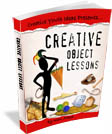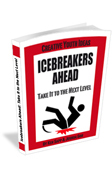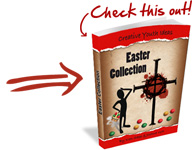From Johanan, Collector at Magdala
to Zacchaeus, Commissioner of Taxes at Jericho
Dear Zaccheus:
I have had Jesus, the prophet of Nazareth, to dinner today, and a number of our friends came to meet him. I promised to let you know what happened, but I promised too much. I will tell you when I can, but it is only an hour since he went, and he has left me full of thoughts. As you know, I was rather nervous about the whole affair. First thing this morning, I would have given a good deal to stop the dinner altogether. You and I often say that our sort of people are no worse than other folk, but when I went over the invitations in my mind, I couldn’t help feeling that we were strange company for such a man as Jesus. I wondered what would happen if Reuben began talking the way he does sometimes, and I meant to give him a hint before the meal began, however, I did not get an opportunity, and as it happened, there was no need. Reuben wasn’t himself today.
Well, Jesus came. What is he like?
If you had asked me halfway through the dinner, I should have said that he was the nicest man I had ever met. But now I think, – Oh, I don’t know what I think, except that I am not fit to touch his feet. Of course we were all very anxious to hear him talk. Reuben was hoping that he would give the Pharisees a dressing down, and made an opening for him, but Jesus never mentioned the Pharisees and to tell the truth I believe we all forgot that there were such people. He seemed just as ready to listen as to talk. And what a listener he is! I never met anyone who listens as he does. I happened to mention my boy, Benjamin, for we are wondering what trade to put him to, and of course we are rather anxious as there are not many openings for a publican’s son. Jesus was interested immediately, and asked me questions about the lad. He told me some things, too, about his own boyhood. I began to feel rather ashamed at last for you know it is very strange to meet some one who understands your own lad better than you do yourself. But does he understand boys!
I cannot tell you all the things we talked about. They were much the same kind of things you and I might speak of, but there was a difference. I found myself talking to him as though I had known him all my life. I began telling him – I can’t think how I did it – how I got into this business of ours, and I was explaining our difficulties and how impossible it is always to keep straight when everyone is trying to take advantage of you, especially in these hard times when the future is so uncertain and one must make provision while one can for wife and family. He just listened, and looked straight in my face as though he understood all I said – and all I didn’t say as well – and as though he were sorry for us. He didn’t interrupt or argue with me, but the more I looked at him, the more I wished I had never got into the cursed business and the more I wished I could begin again.
You will think it ridiculous, but as he sat there, I wondered why we were not all like him. We were all sick, and he alone was well. I remembered the time when you and I were boys together, and I felt that we had missed the road. If I had been alone with him, I think I should have made a clean breast of it, and asked him what to do. He could see that .my feelings were getting out of hand, – they say in the town that Johanan has no feelings, and I half believed them until today. But really the tears were in my eyes, and I had such a longing, and felt so helpless. And Jesus said to me, as though he understood everything. “Don’t be afraid, think it over again, and remember your Heavenly Father knows what you need. Don’t lose your life in trying to save it.” Do you see what he meant?
Well, the meal ended, and I was bidding him goodbye at the door, when the girl, Rachel – perhaps you guess her trade came up to the door, and I felt the blood rush to my cheeks, lest she should show that she knew me. But she had eyes only for Jesus. Some of his friends drew back when they saw her, but Jesus said only this, “Don’t do it any more.” She stood gazing after him as he went, then covered her face with her hand and ran down the street. As for me, I watched him until he was out of sight, and had to work hard not to run after him. He is on his way to Jerusalem, and is to pass through Jericho. I mentioned you to him. Be sure to see him. Don’t let anything stop you.
Peace be with you!
JOHANAN
P.S. Benjamin has just come in. You would love that boy, Zacchaeus, I must be a better father to him. Do you remember the first time you and I went up to the temple? We were Benjamin’s age. Do you remember how we all sang as we went up –
“Who shall ascend into the hill of the Lord?
He that hath clean hands and a pure heart.”
We have missed our way, Zacchaeus, but I think, since Jesus was here, that God has not altogether cast us off. Do you think we could begin again?
[Original Source: Unknown]

 MORE IDEAS? See “Creative Object Lessons”
MORE IDEAS? See “Creative Object Lessons”
200 page e-book that explains everything you need to know when planning your very own object lessons. It contains 90 fully developed object lesson ideas and another 200 object lesson starter ideas based on Biblical idioms and Names / Descriptions of God.
Learn More…

 MORE IDEAS? See “Creative Object Lessons”
MORE IDEAS? See “Creative Object Lessons”



 Introduction to this Easter Game
Introduction to this Easter Game